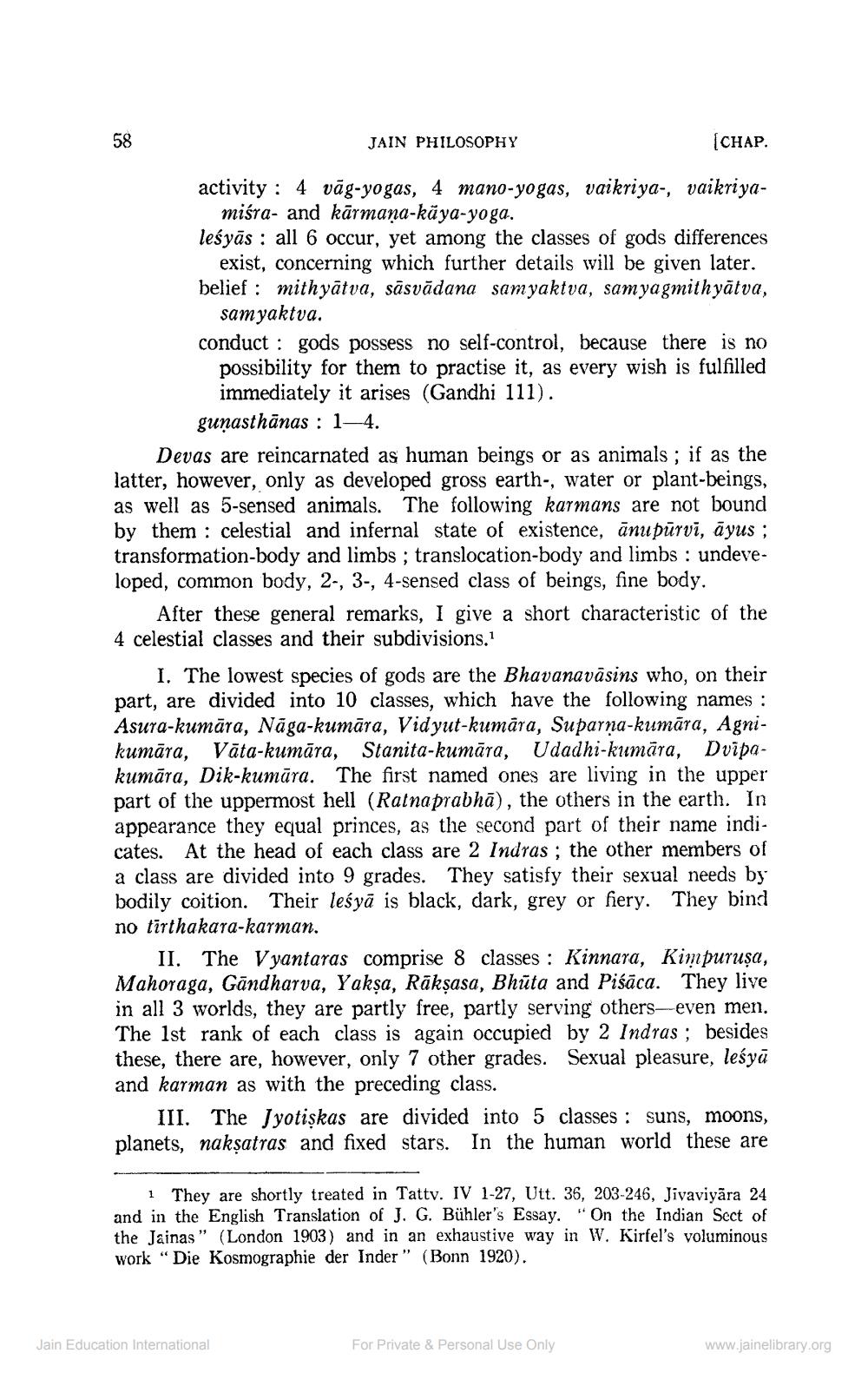________________
58
[CHAP.
activity 4 vag-yogas, 4 mano-yogas, vaikriya-, vaikriyamiśra- and karmaṇa-kāya-yoga.
leśyās all 6 occur, yet among the classes of gods differences exist, concerning which further details will be given later. belief mithyātva, sāsvādana samyaktva, samyagmithyātva, samyaktva.
JAIN PHILOSOPHY
conduct gods possess no self-control, because there is no possibility for them to practise it, as every wish is fulfilled immediately it arises (Gandhi 111).
guṇasthānas: 1-4.
Devas are reincarnated as human beings or as animals; if as the latter, however, only as developed gross earth-, water or plant-beings, as well as 5-sensed animals. The following karmans are not bound by them celestial and infernal state of existence, anupūrvi, āyus; transformation-body and limbs; translocation-body and limbs: undeveloped, common body, 2-, 3-, 4-sensed class of beings, fine body.
After these general remarks, I give a short characteristic of the 4 celestial classes and their subdivisions.1
I. The lowest species of gods are the Bhavanavāsins who, on their part, are divided into 10 classes, which have the following names : Asura-kumāra, Nāga-kumāra, Vidyut-kumāra, Suparṇa-kumāra, Agnikumāra, Vāta-kumāra, Stanita-kumara, Udadhi-kumāra, Dvipakumāra, Dik-kumāra. The first named ones are living in the upper part of the uppermost hell (Ratnaprabha), the others in the earth. In appearance they equal princes, as the second part of their name indicates. At the head of each class are 2 Indras; the other members of a class are divided into 9 grades. They satisfy their sexual needs by bodily coition. Their leśya is black, dark, grey or fiery. They bind no tirthakara-karman.
II. The Vyantaras comprise 8 classes: Kinnara, Kimpurușa, Mahoraga, Gandharva, Yakṣa, Rākṣasa, Bhuta and Piśāca. They live in all 3 worlds, they are partly free, partly serving others-even men. The 1st rank of each class is again occupied by 2 Indras; besides these, there are, however, only 7 other grades. Sexual pleasure, leśyā and karman as with the preceding class.
III. The Jyotisṣkas are divided into 5 classes: suns, moons, planets, nakṣatras and fixed stars. In the human world these are
1 They are shortly treated in Tattv. IV 1-27, Utt. 36, 203-246, Jivaviyāra 24 and in the English Translation of J. G. Bühler's Essay. " On the Indian Sect of the Jainas" (London 1903) and in an exhaustive way in W. Kirfel's voluminous work "Die Kosmographie der Inder" (Bonn 1920).
Jain Education International
For Private & Personal Use Only
www.jainelibrary.org




